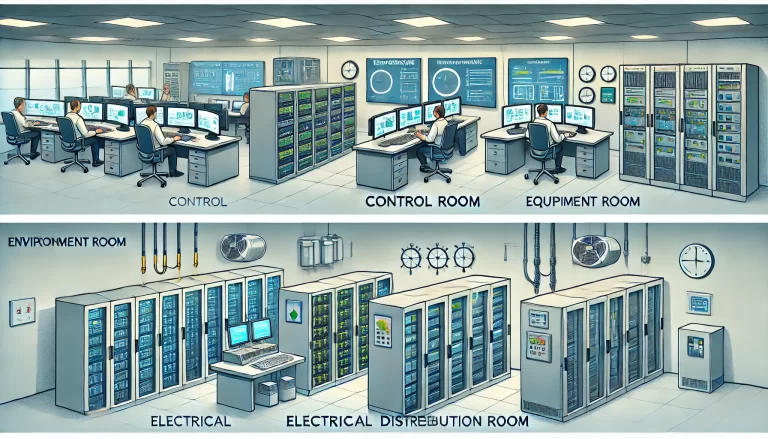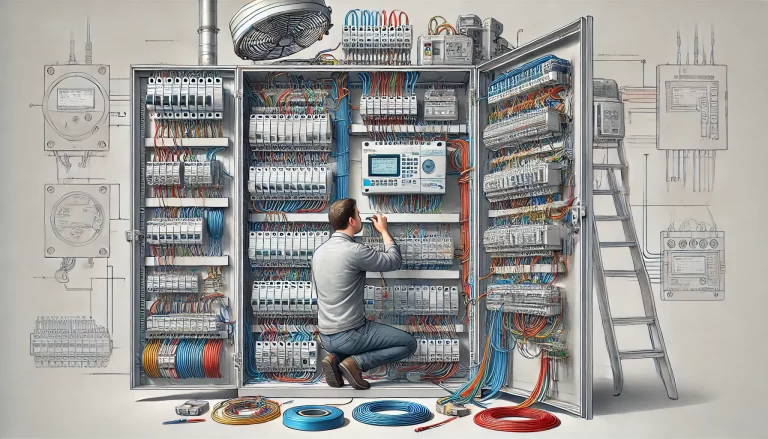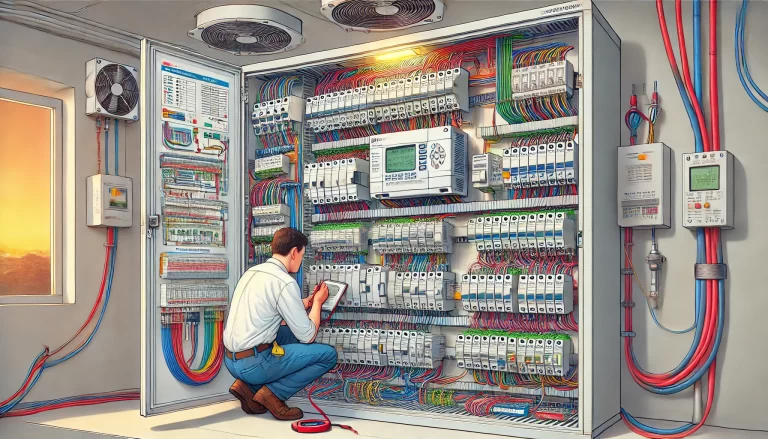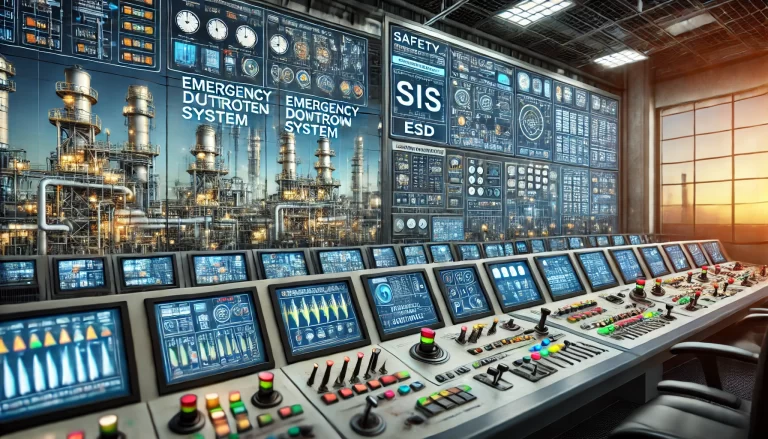PLC (Programmable Logic Controller) control cabinets are advanced automation solutions that combine compact design, reliable operation, and comprehensive functionality. These cabinets feature essential protections such as overload, short circuit, and phase loss protection. Their modularity allows them to scale with control requirements, supporting standalone automation or integration into distributed control systems (DCS) via industrial Ethernet or fieldbus networks. PLC control cabinets are versatile and widely applicable in industries such as power generation, metallurgy, chemical processing, papermaking, and environmental wastewater treatment.

Basic Structure of PLC Control Cabinets
PLC control cabinets are essentially computers designed specifically for industrial control. Their hardware structure closely resembles that of microcomputers. Below are the fundamental components and their roles:
1. Power Supply
The power supply is critical to the overall system. A reliable power system ensures stable operations. Most PLCs are designed to operate directly from AC power with fluctuations within a range of +10% to +15%, negating the need for additional measures in standard industrial environments.
2. Central Processing Unit (CPU)
The CPU acts as the brain of the PLC system. It carries out the following functions:
Receives and stores user programs and data entered via programming tools.
Monitors the status of power, memory, I/O modules, and watchdog timers.
Diagnoses syntax errors in user programs.
During operation, the CPU executes tasks in a loop comprising three phases:
Input Sampling: It scans input devices and updates the I/O image memory.
Program Execution: It reads user instructions sequentially, executes logic or arithmetic operations, and updates output memory.
Output Refresh: Based on the updated memory, it sends control signals to output devices.
For enhanced reliability, advanced PLCs often incorporate redundant systems, such as dual CPUs or triple-CPU voting systems, ensuring uninterrupted operations even in the event of CPU failure.

3. Memory
PLC memory is divided into:
System Program Memory: Stores the core operating software of the PLC.
User Program Memory: Stores application-specific control programs written by the user.
4. Input and Output (I/O) Interface Circuits
Input Interface: Converts signals from field devices into a format that the PLC can process. It uses components like optocouplers for electrical isolation and signal conditioning.
Output Interface: Sends control signals to field devices. It integrates output data registers, gating circuits, and interrupt request systems to manage signal flow effectively.
5. Functional Modules
Additional modules, such as counters, position controllers, and analog signal processors, extend the PLC’s capabilities to meet specific application needs.
6. Communication Modules
These modules enable PLCs to connect with other systems through industrial communication protocols like Modbus, PROFIBUS, or Ethernet/IP. This facilitates integration into larger control systems.

Working Principle of PLCs
The operation of a PLC system revolves around a repetitive scanning process consisting of three key stages:
1. Input Sampling
During this phase, the PLC sequentially reads the status of all input devices and stores these states in the I/O image memory. Input signals need to remain stable for the duration of a scan cycle to be accurately captured.
2. User Program Execution
The PLC executes user-defined programs in a sequential manner, starting from the top. The execution involves:
Logical operations based on ladder diagrams, function blocks, or structured text.
Updating corresponding output statuses or memory states.
Executing special instructions for tasks like data communication or advanced calculations.
3. Output Refresh
In this final phase, the PLC updates output devices based on the states in the output memory, driving actuators, motors, or other field devices accordingly.
By repeating these stages at high speeds, PLCs achieve real-time control of industrial processes.
Key Features of PLC Control Cabinets
Flexibility and Scalability:
PLC systems are modular and easily expandable to meet varying control requirements.
They excel at discrete control and can also perform process control, such as PID loops.
Ease of Use:
Programming is straightforward, leveraging user-friendly languages like ladder diagrams or structured text.
On-site program modifications can be performed without hardware changes.
Robustness:
PLCs are designed for harsh industrial environments, offering excellent resistance to electrical noise and mechanical vibrations.
Their reliability is significantly higher compared to traditional control systems.

Applications of PLC Control Cabinets
PLC control cabinets are indispensable in diverse industries. Typical applications include:
Water Treatment Systems: Monitoring and controlling pumps, valves, and treatment processes.
HVAC Systems: Ensuring optimal environmental conditions in industrial and commercial spaces.
Industrial Machinery: Controlling operations in CNC machines, packaging lines, and conveyor systems.
Energy Sector: Managing power distribution and renewable energy systems.
Port and Material Handling: Automating cranes, conveyors, and bulk material handling equipment.
By providing precise, reliable, and scalable control, PLC systems have become the backbone of modern industrial automation.

Conclusion
PLC control cabinets play a pivotal role in modern industrial automation by offering robust, scalable, and flexible solutions. Their advanced features and wide-ranging applications ensure seamless integration across industries, enhancing operational efficiency and reliability. As technology evolves, PLC systems continue to adapt, incorporating advancements like IoT and AI to meet future demands for smarter and more connected automation systems.
